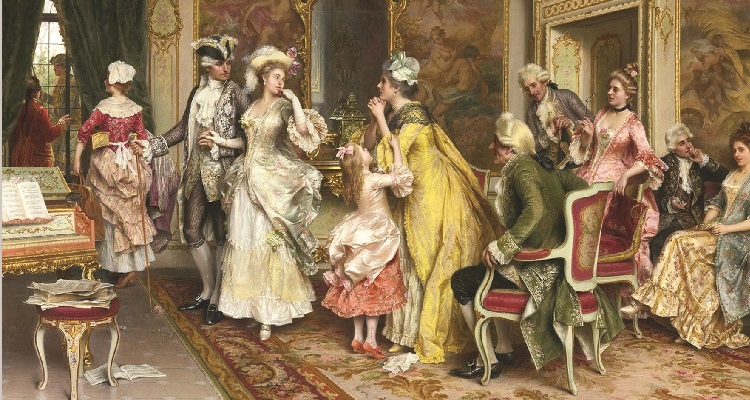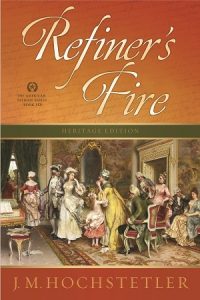An award-winning author and editor, J. M. Hochstetler is the daughter of Mennonite farmers, and a lifelong student of history. Her American Patriot Series is a comprehensive historical fiction series on the American Revolution. The latest book in the series is Refiner’s Fire (Sheaf House Publishers): As the war between America and Britain shifts into the fragile republic’s heartland, sinister schemes draw Jonathan and Elizabeth into their own separate maelstroms. Will the Refiner’s Fire tear them from each other’s arms forever? In this interview, she tells us the television show that inspired her, outlines the big picture of her revolutionary war series, and reveals where she took literary license…
Your American Patriot series is set during the time of the American revolution. What inspired you to use these events as a background for your series?
 Well, the truth is that the inspiration for this series came from a TV movie back in the early 1980s, The Scarlet Pimpernel. It was set during the French Revolution and starred Anthony Andrews and Jane Seymour. It had everything: drama, romance, intrigue, and hysterical comedy. I absolutely adored it, and I knew I had to write my own version!
Well, the truth is that the inspiration for this series came from a TV movie back in the early 1980s, The Scarlet Pimpernel. It was set during the French Revolution and starred Anthony Andrews and Jane Seymour. It had everything: drama, romance, intrigue, and hysterical comedy. I absolutely adored it, and I knew I had to write my own version!
The problem was that I didn’t have any interest in the French Revolution, and besides they’d already done it. Thankfully we have our own Revolution, and the rest followed.
Where does Refiner’s Fire fit into the bigger picture of the series?
Refiner’s Fire is the next to the last book in the American Patriot Series. Book one, Daughter of Liberty, is set in Boston, beginning just before the battles of Lexington and Concord in April 1775 and ending just after the Battle for Bunker’s Hill in June, an intense period of about two months.
The sequels Native Son, Wind of the Spirit, Crucible of War, and Valley of the Shadow cover developments in the war and in my characters’ lives from mid-1775 through early 1778, ranging from Massachusetts to Pennsylvania to Ohio Territory among the Native Americans.
Then book six, Refiner’s Fire, is set in both America and France in 1778 and 1779. The final volume in the series, Forge of Freedom, will cover the last two years of the war from 1780 through the Siege of Yorktown in September/October 1781 and might extend into early 1782.
My intent in this series is both to entertain and to accurately teach the history of our Revolution in a thrilling, intensively researched story of adventure, romance, and intrigue that covers the entire war from beginning to end. It also portrays how the war impacted women, black people, and Native Americans.
To do that, I basically drop my fictional characters into the real society, culture, and events of this period amid many real people who lived at the time, and then I let them interact and see what happens. It’s been a lot of fun!
How did you conduct your research to get the historical details right?
That’s what takes me so long to write each book! I’m compulsive about accuracy, so I do intensive research using published books and reputable online websites, and by visiting historical sites whenever I can.
I also seek input from fellow historical fiction writers who have expertise in relevant subjects. Beyond the historical events, I especially look for details of common everyday life and the personalities of the real people because I want the series to be not only accurate in the events it covers, but also authentic in the way of life it portrays.
Of course, I can’t claim that I never miss anything. I’m human, and like everyone else I’m not able to create something that’s perfect in every regard. But I sure do try.
Fact vs fiction: Were there any historical details where you took some literary license? (If so, what were they?)
Just inserting fictional characters into the real warp and woof of history means you’re taking literary license. My characters interact directly with historical persons like George Washington, John Adams, Benjamin Franklin, the Shawnee sachem Cornstalk and his sister Nonhelema, plus many others, including several very minor people who show up in the historical record.
Those interactions are fictional, of course, though I include the historical characters’ own recorded words, opinions, and actions whenever possible and try to recreate their personalities to be consistent with what’s known of them. Obviously in the process I have to include some fictional events too. But I try to weave them in organically so they reflect the actual historical conflicts and their root causes.
How does your faith impact how you write as a storyteller?
It impacts everything. I’m very much aware that I couldn’t write anything of eternal value without God’s guidance and the insights He provides.
When I pull back and try to look at my stories objectively, I’m amazed at how themes and truths from the Bible are constantly weaving through them, including things that I wasn’t conscious of as I was writing. The Lord brings stories, characters, and scenes to my mind not only through the research I do, but also through the faithful teaching and preaching at my church.
I’m very grateful for the impact His servants who minister there have on my spiritual growth and my relationship with Jesus Christ. And I’m finding the process of writing to be much greater than simply telling stories to entertain.
It’s truly bearing witness to the high truths of God and to His miraculous working in our world. Jesus taught through parables, short fictional stories that illustrate eternal truths. And that’s what I’m trying to do in long form.
Visit J.M. Hochstetler’s author page:
https://www.familyfiction.com/authors/j-m-hochstetler/
Refiner’s Fire
American Patriot #6
J.M. Hochstetler
Sheaf House Publishers



